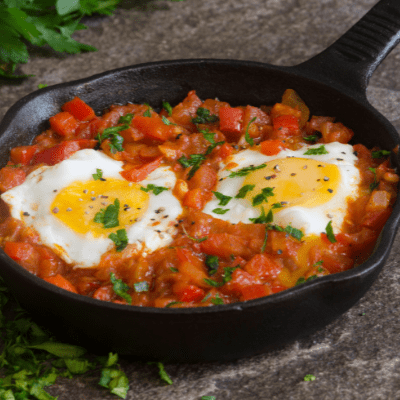Roisin Creedon-Carey chose to intern at Cornell Cooperative Extension to focus on sustainable agriculture practiced through community living. This is the final of three blog posts in her experience embracing seasonal eating as part of her student experience at St. Lawrence’s Adirondack Semester. Find the link to her recipe at the close of the article.

Every Friday, our assistant directors Will and Amanda, would leave the yurt village to do office work and run errands. The students would stay, attending classes and plugging away at woodworking projects, knowing that at 6:30 pm we would reconvene at the dinner table. Around 4:30, we would start to get antsy. We knew that they’d soon be back with mail, newspapers, and weather reports, but most importantly vegetables, meat, and eggs for the week ahead. A bell would ring, alerting us to their arrival. The ten of us would run to greet them and begin hauling in the boxes of goodies from the outside world.
As a group, we would divide and conquer. Some students would bring mail into the classroom, and others would trek vegetables from our Kent Family Growers share into the kitchen. We would shift the vegetables we still had on hand to the front of the pantry so they’d get used first.

We practiced a similar chore on Tuesdays while cleaning out the kitchen. Two students would take all the produce from the pantry carefully inspecting each carrot or leek for signs of deterioration. As the semester progressed, this task got significantly easier due to our improved skills using the bounty.
Sunday nights was my turn to cook, so I would survey the scene and brainstorm dinner creations with my cook partner. At the turn of autumn, we found ourselves with carrots, kale, and excess tomatoes. Our lives weren’t terribly stressful this semester, but we always felt pressured to cook something with tomatoes because the harvest was so bountiful. When the tomatoes were starting to get soft, shakshuka was an ideal use for them as they’d dissolve into a creamy sauce. This comforting dish is naturally gluten-free. A vegan version can be made by excluding the eggs and serving over rice or other grain.
Shakshuka is also delicious for breakfast using leftover bread from dinner the night before to dredge in the sauce. The base of the dish was always tomatoes, garlic, and onion but if we found kale, carrots, eggplant, and peppers in the pantry we’d add them too. The key is to reduce the vegetable mixture to a thickened sauce and taste to adjust the seasonings so the flair of cumin and coriander is integrated into the dish.

My experience on a cook team during the semester helped me get into a practice of creativity and non-waste in the kitchen. It’s a great lesson that had many advantages: deeper appreciation for farmers, yummier dishes, and fewer strange smells coming from the produce cupboard!
Try my vegetable filled version of shakshuka here.
If you enjoyed this post, check out my experience with vegetables here and the post on local livestock and meats here.